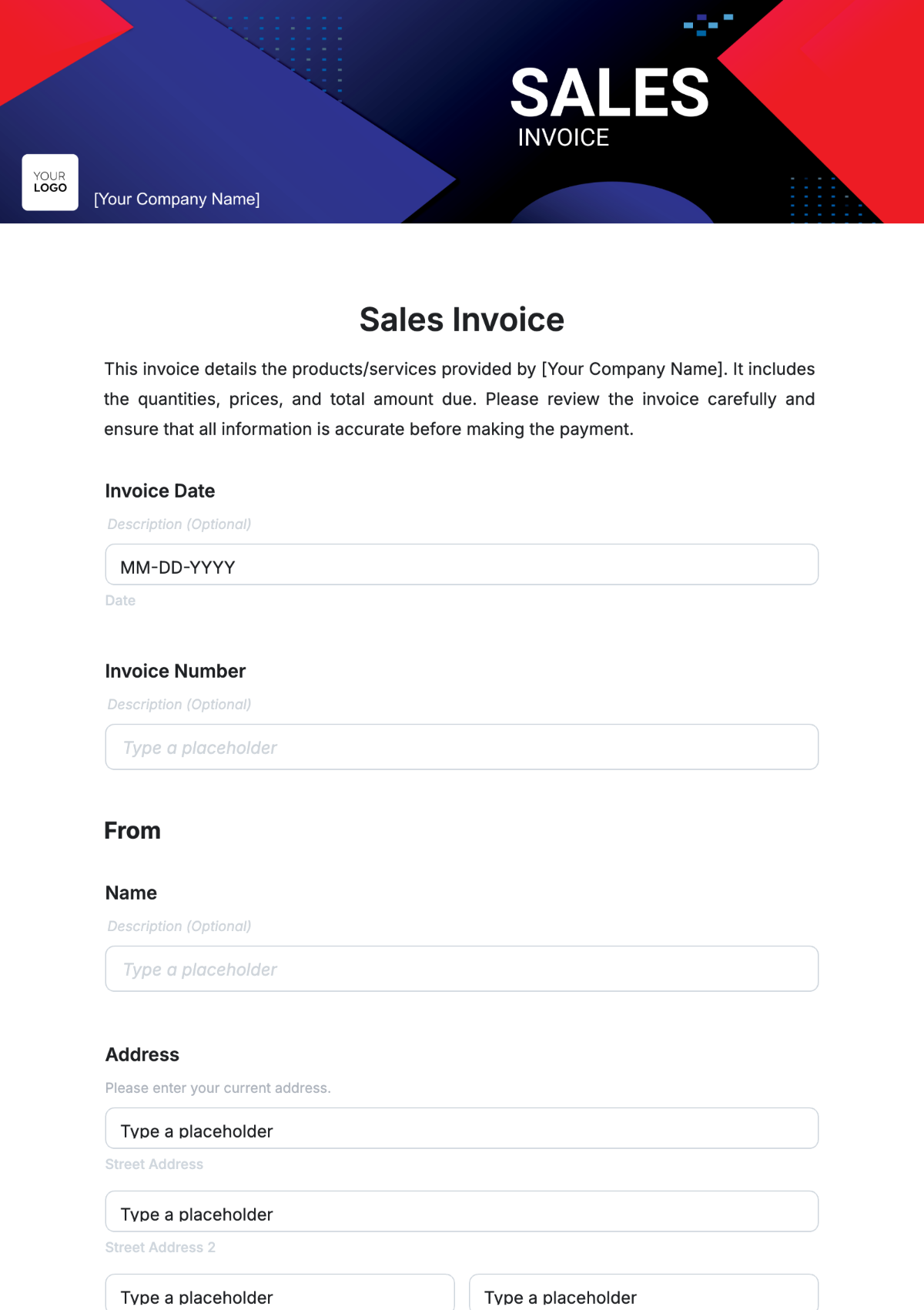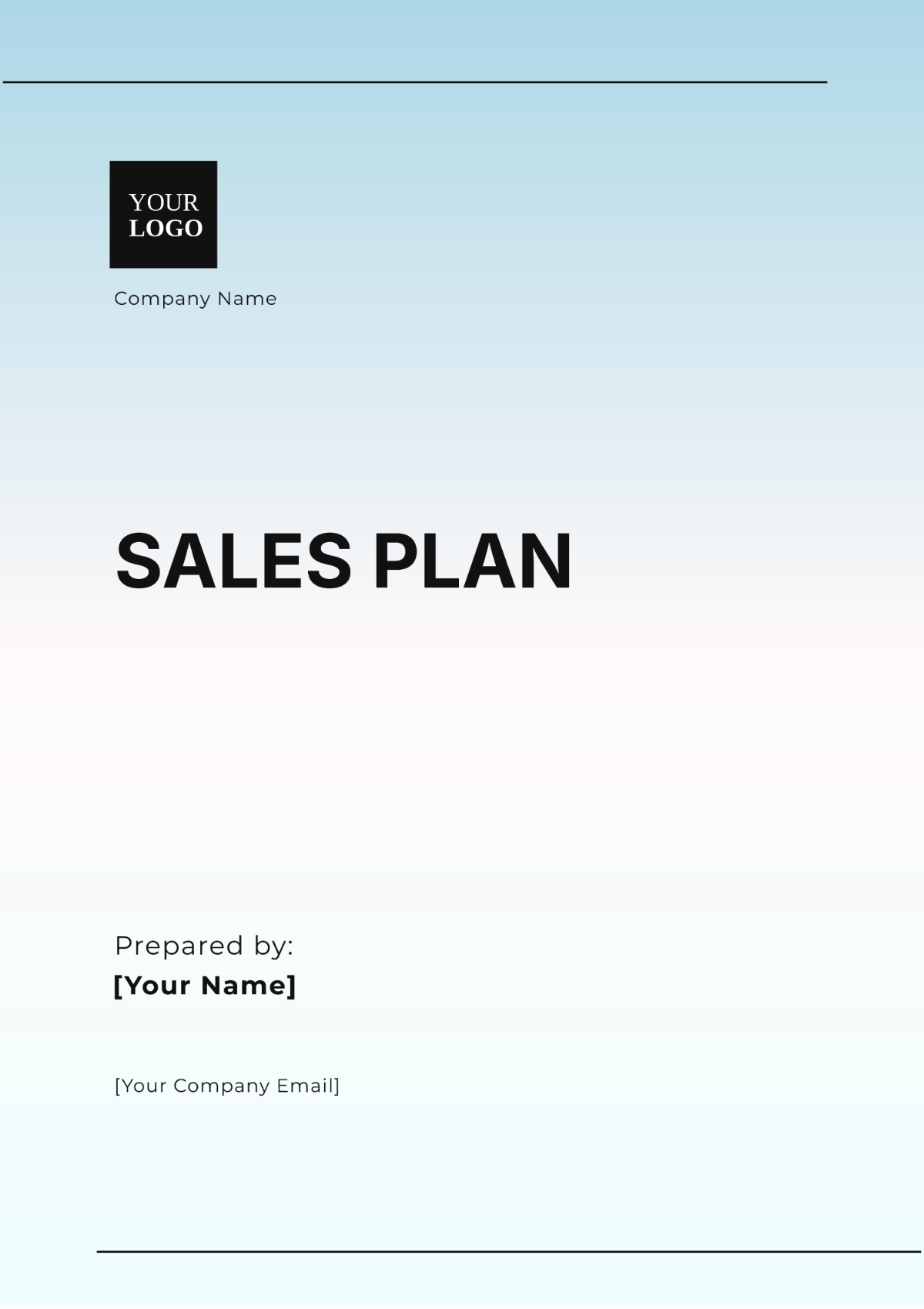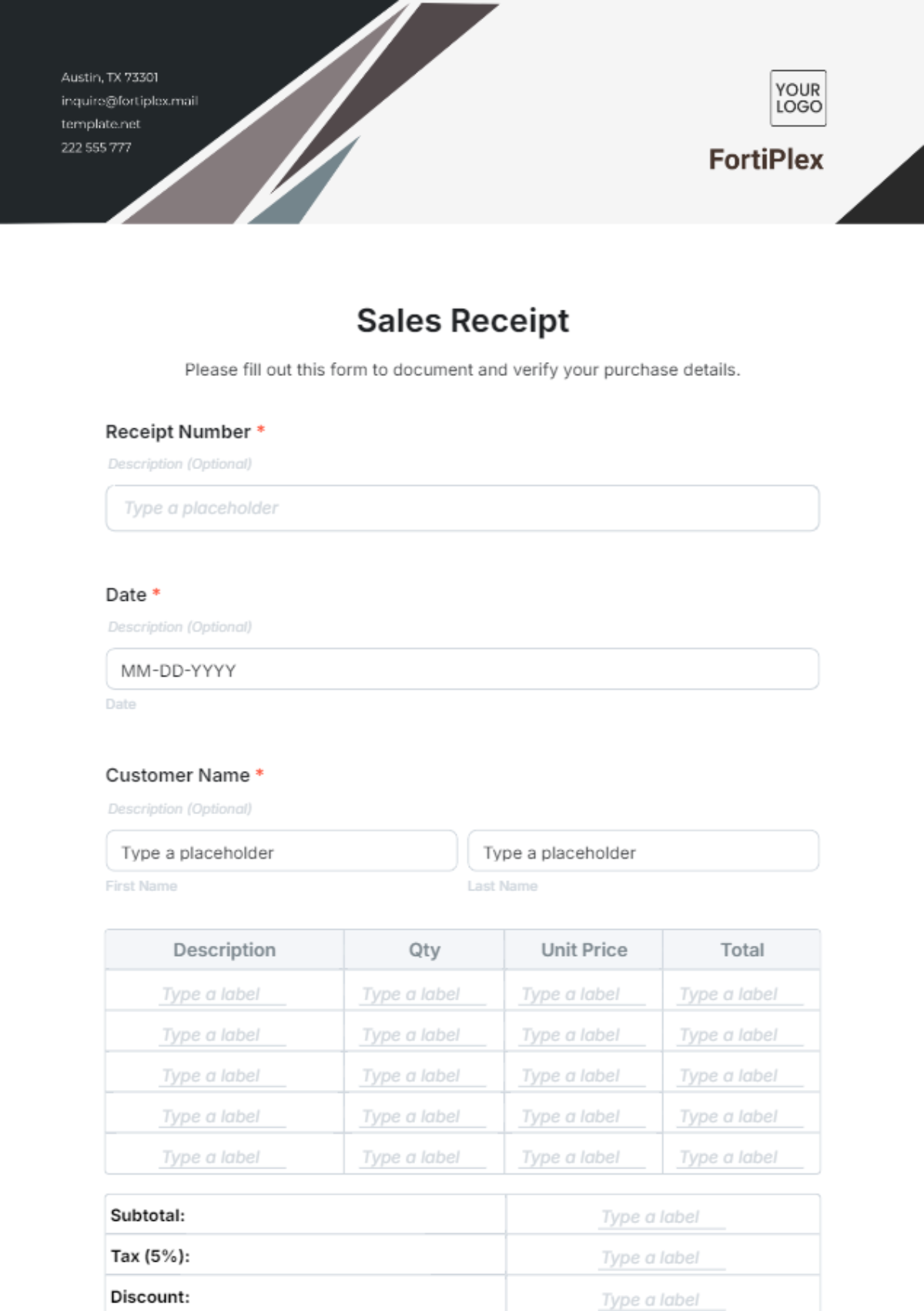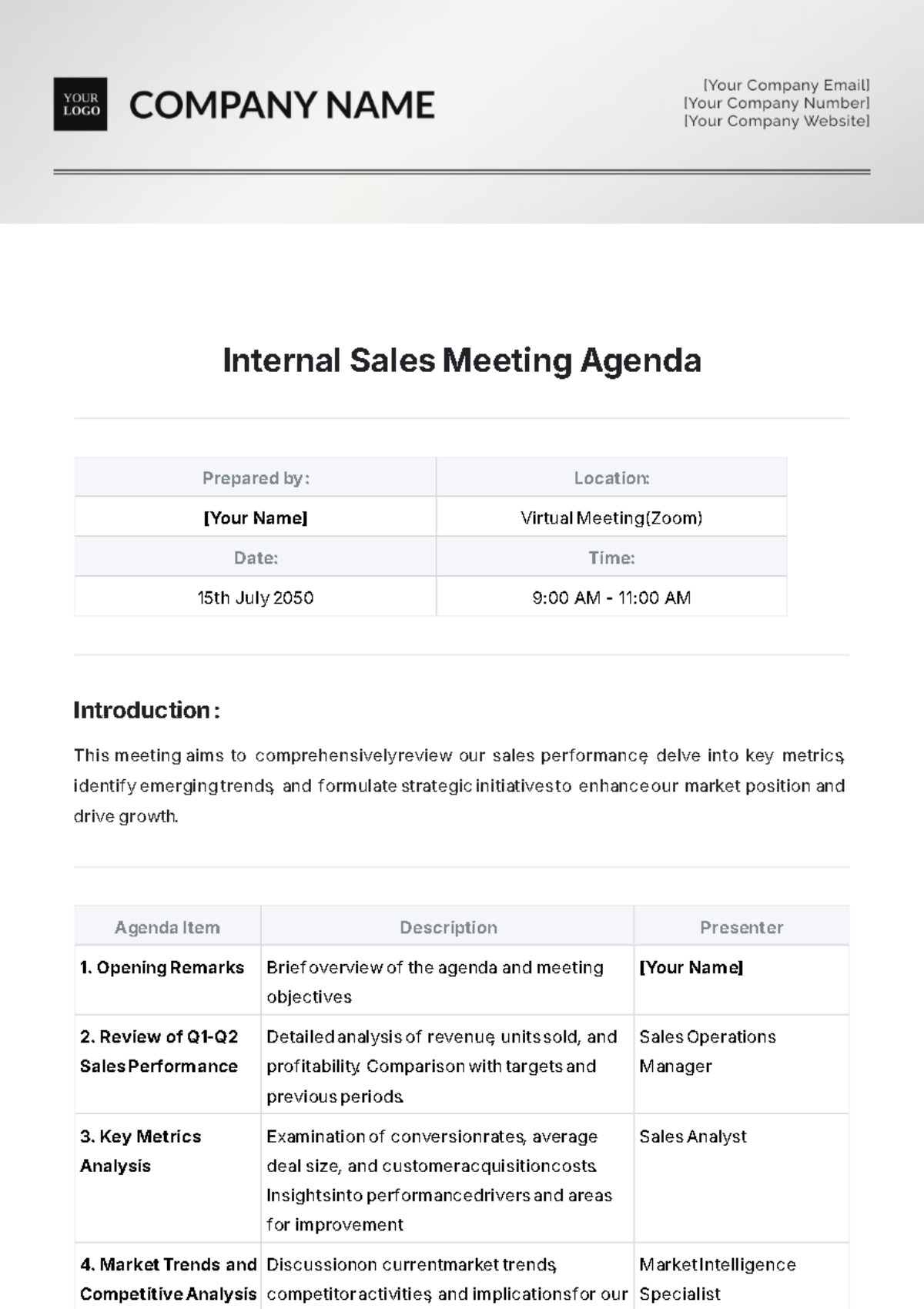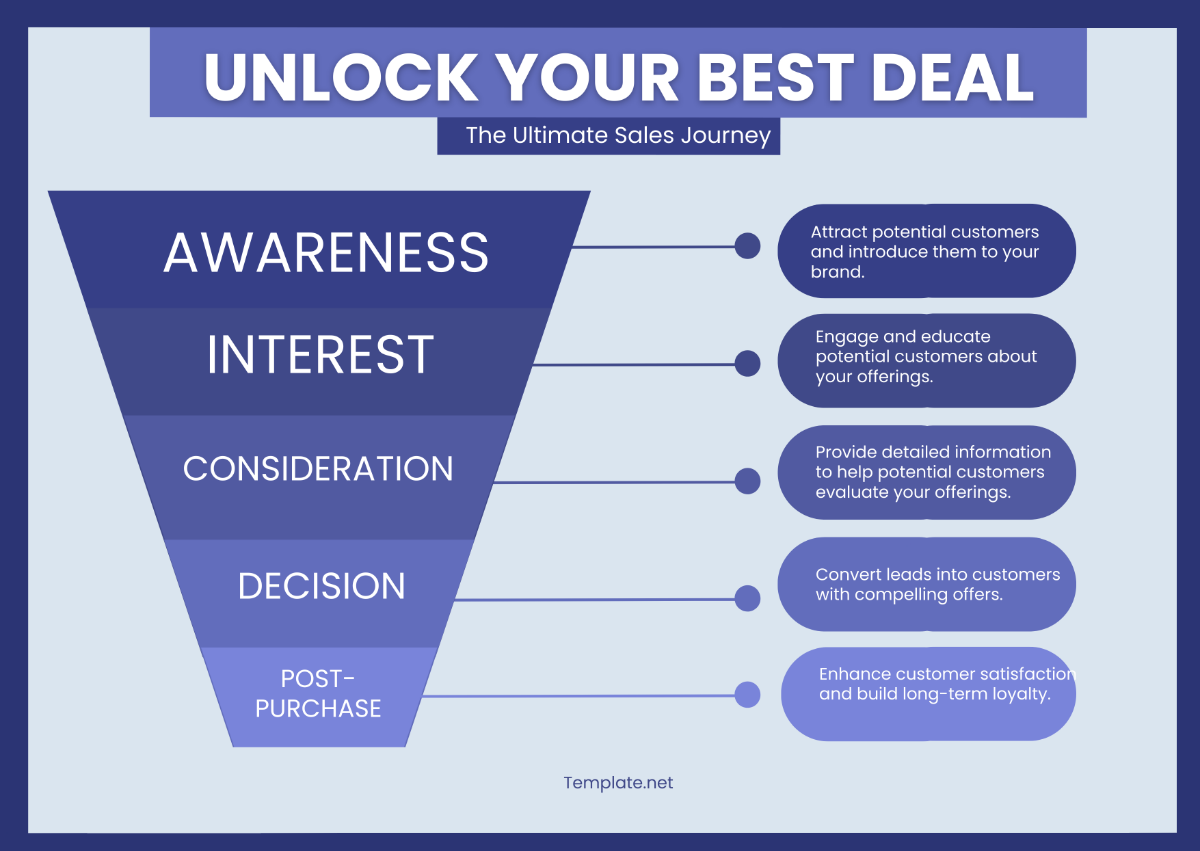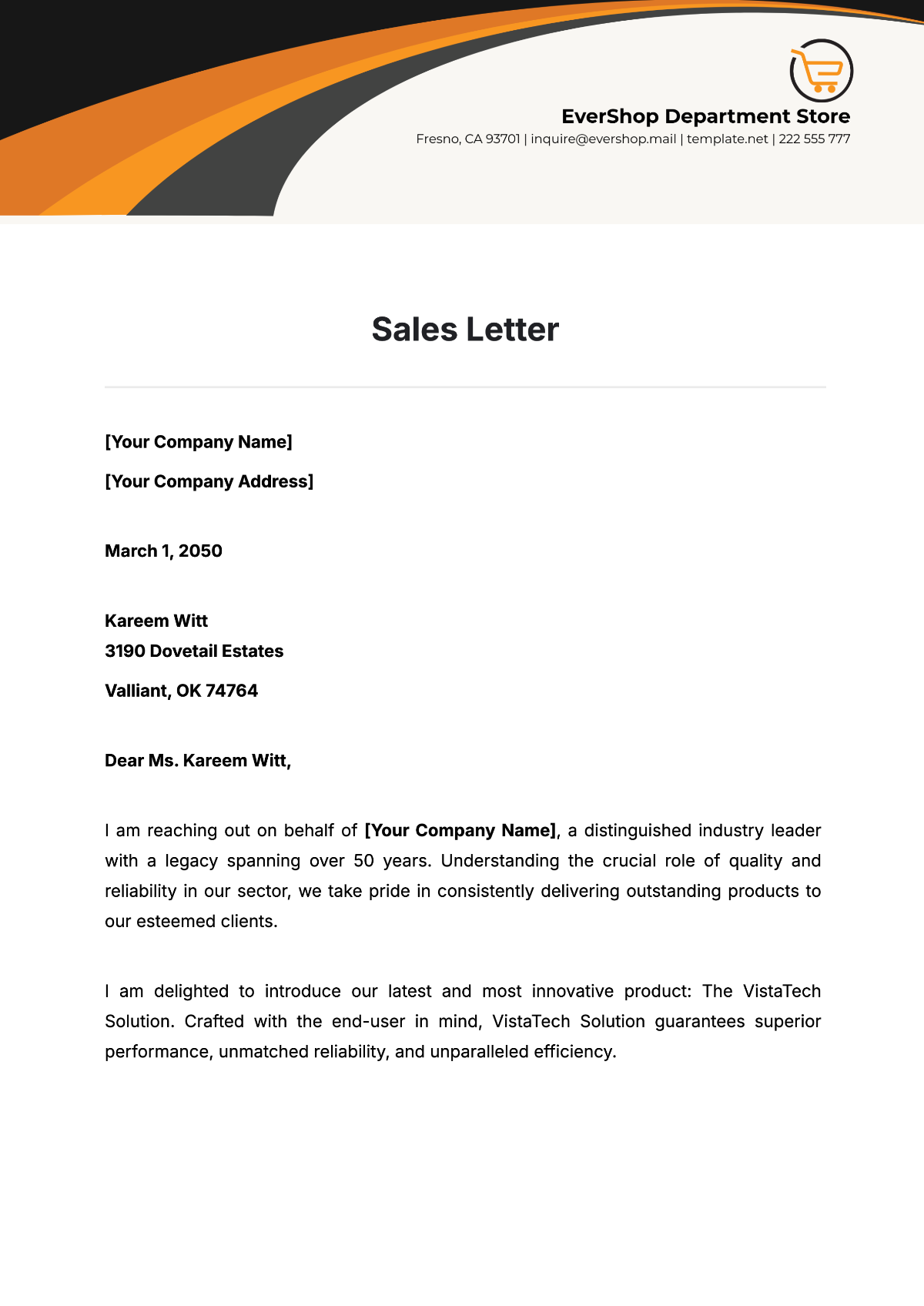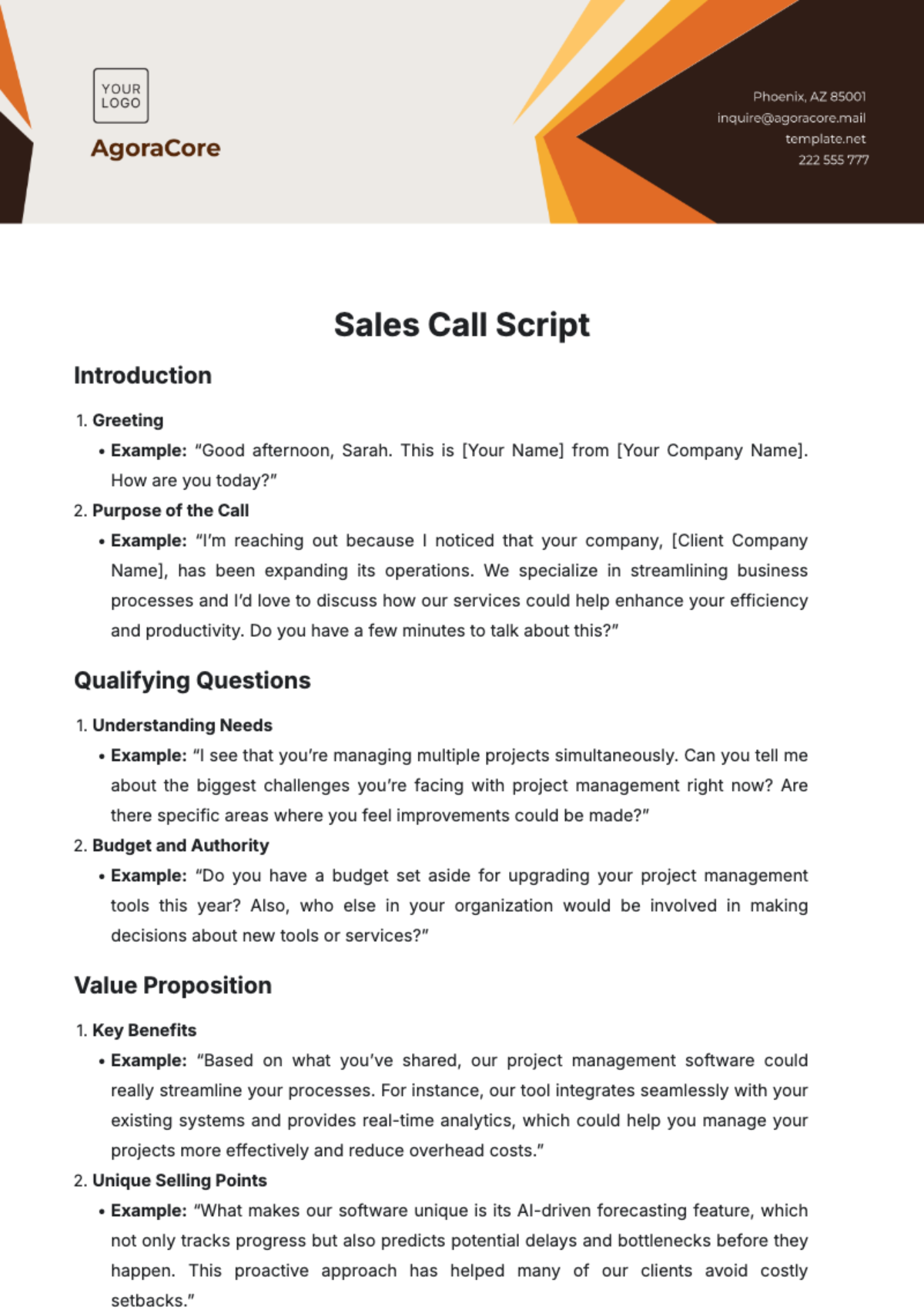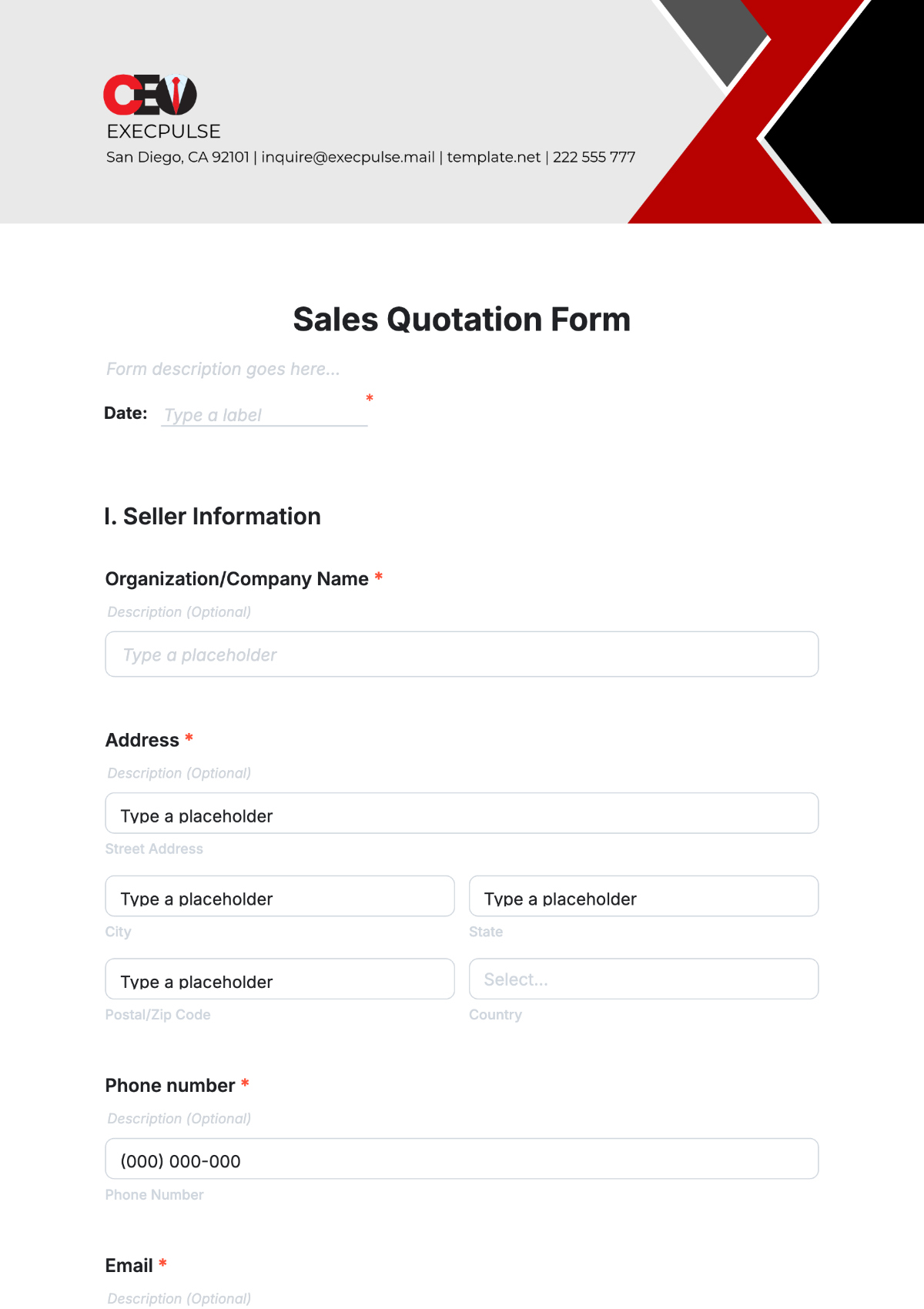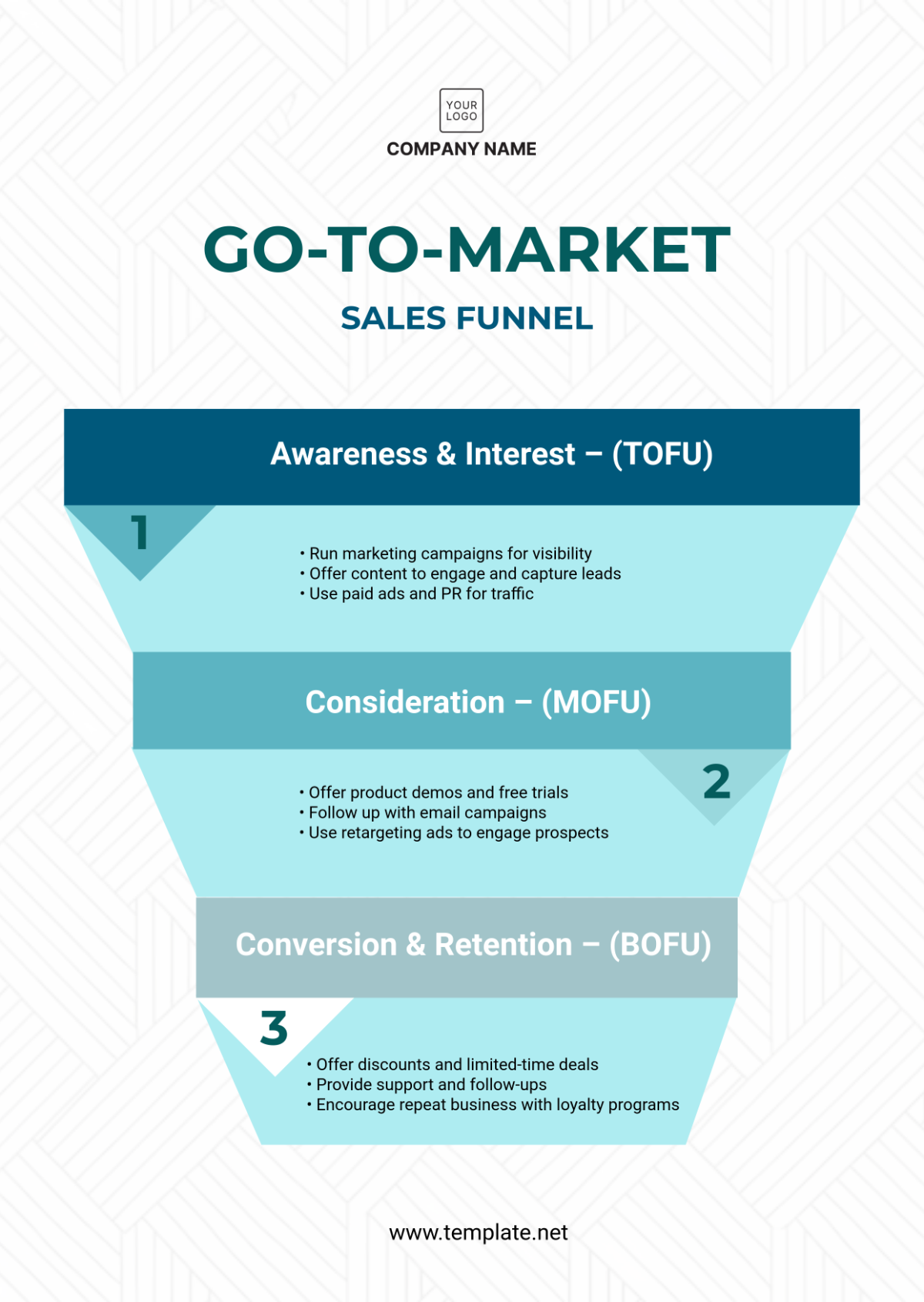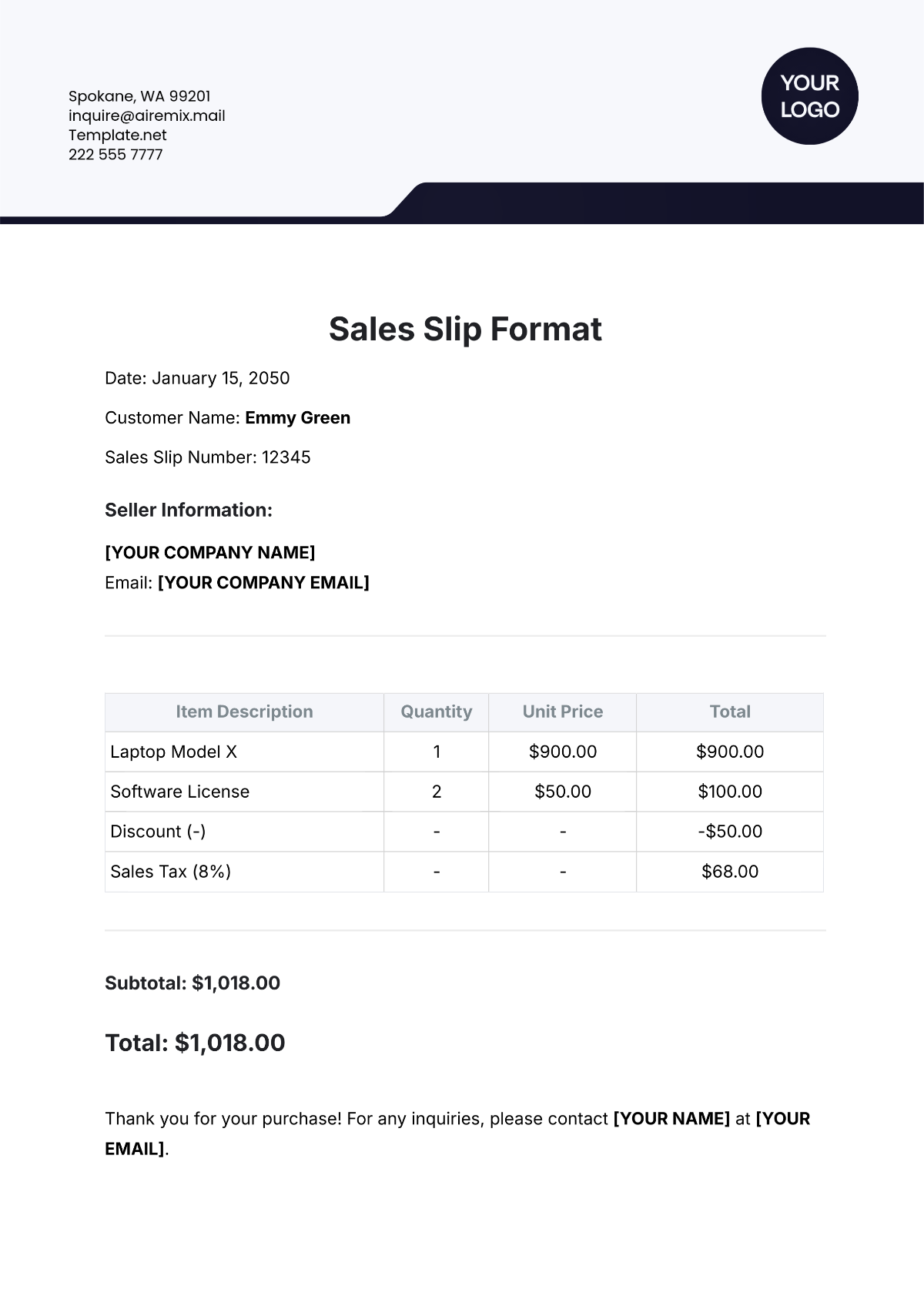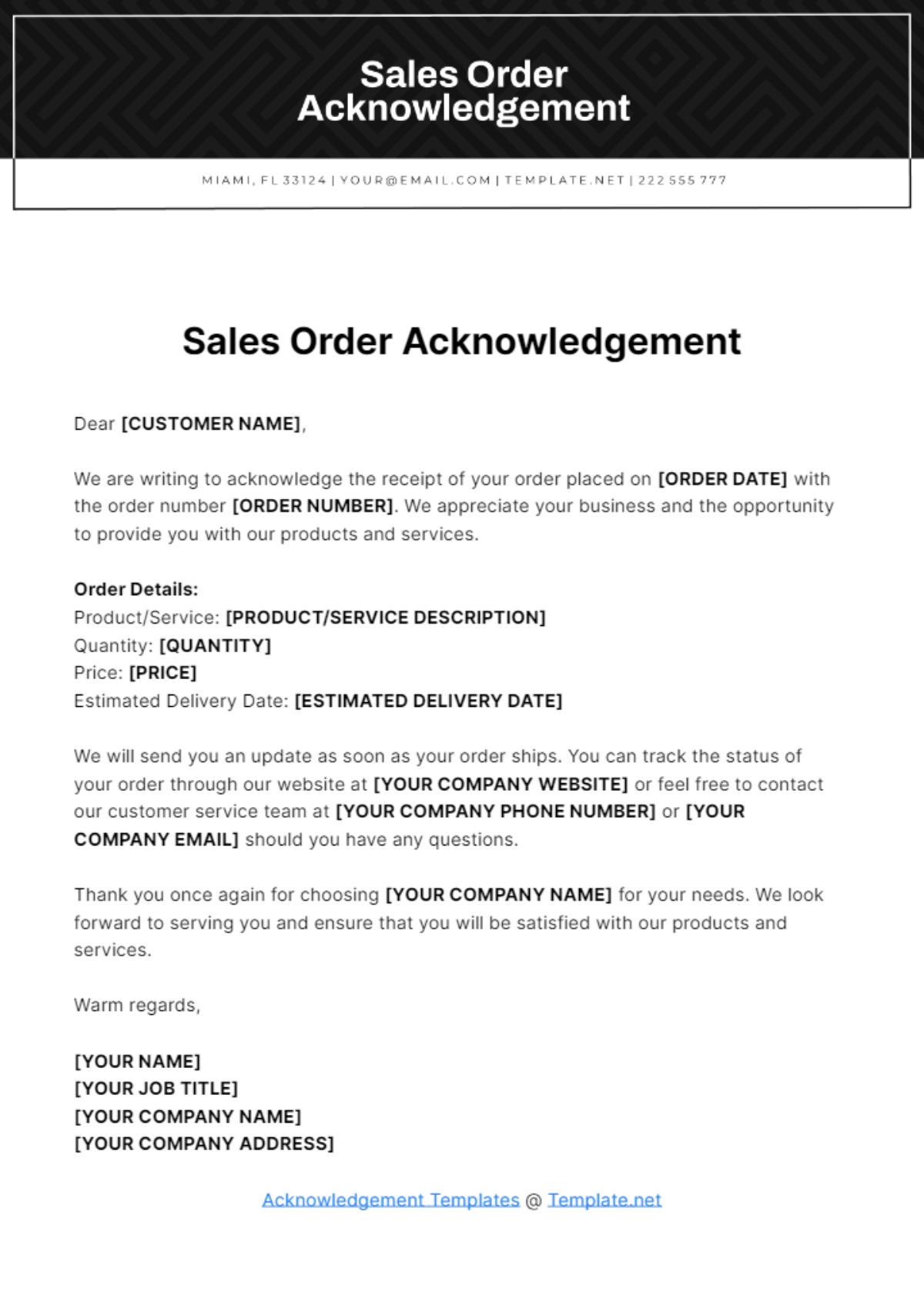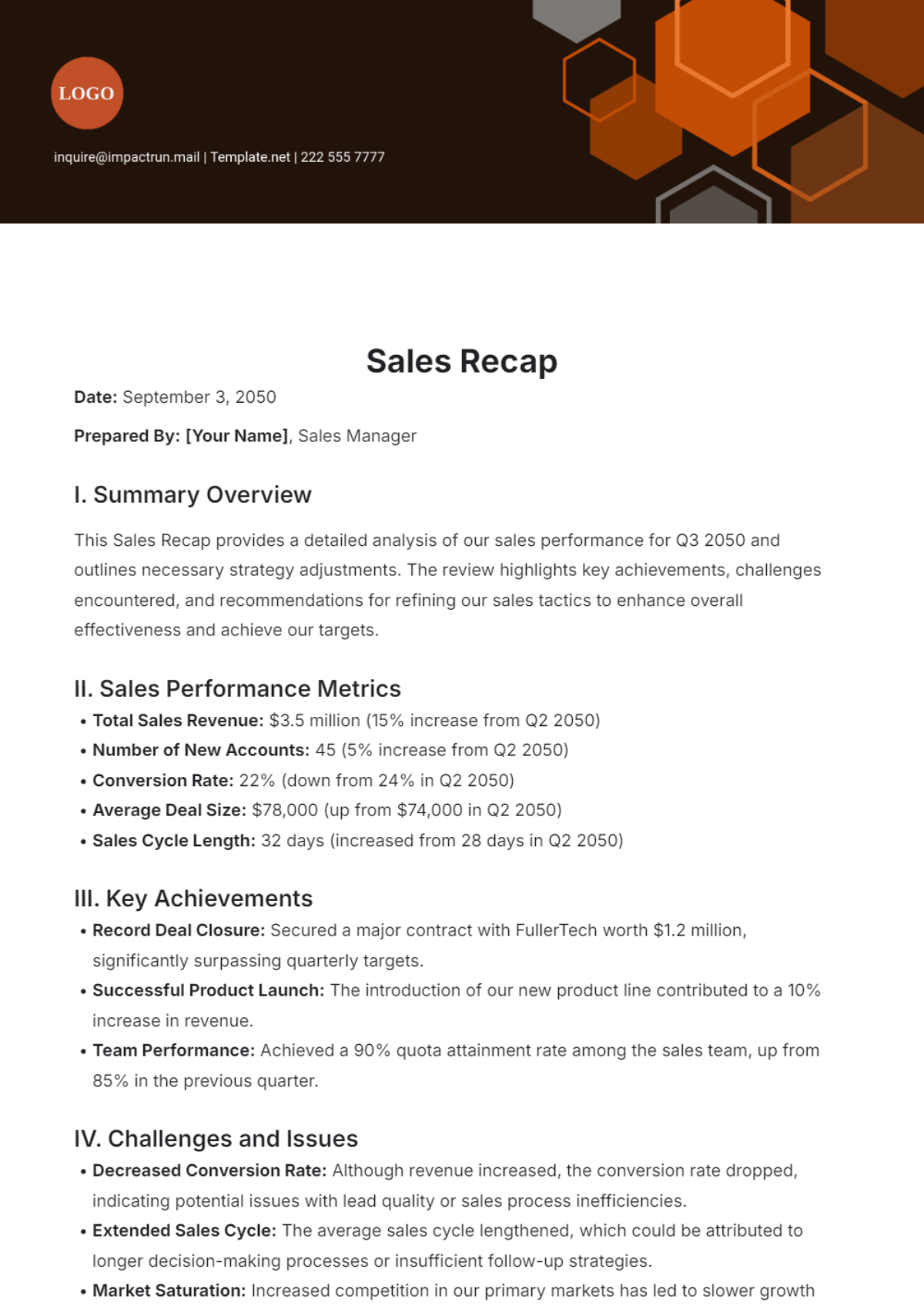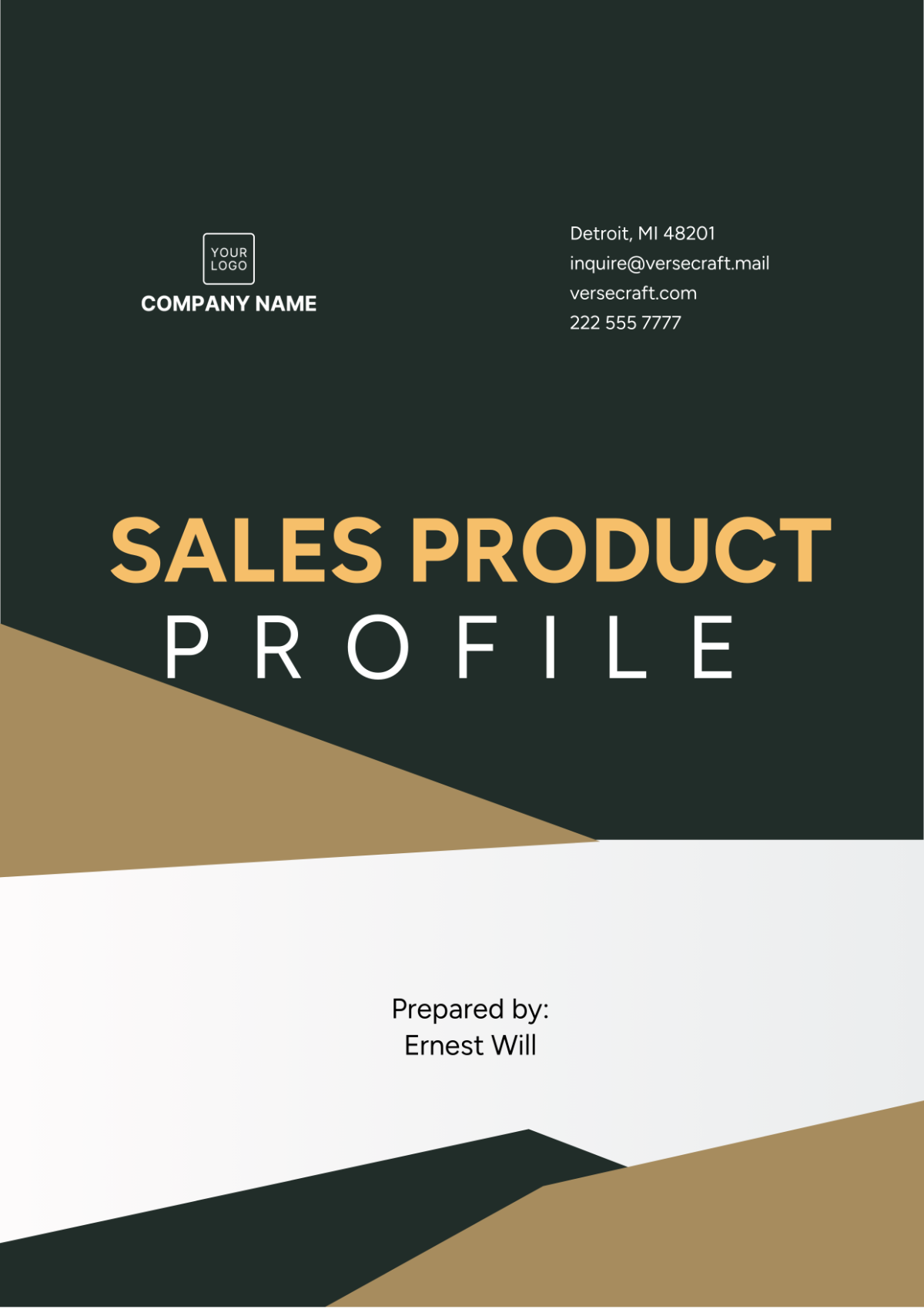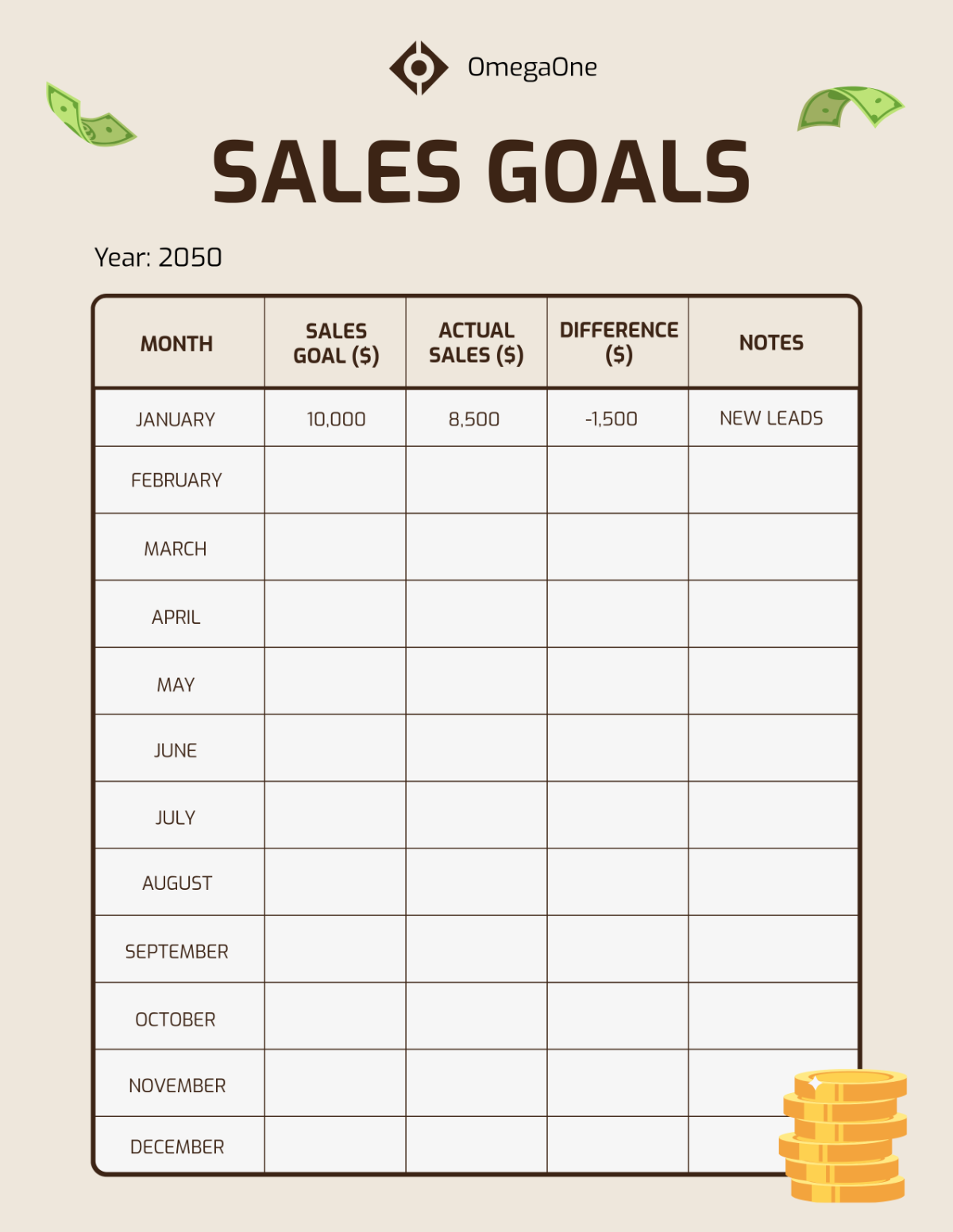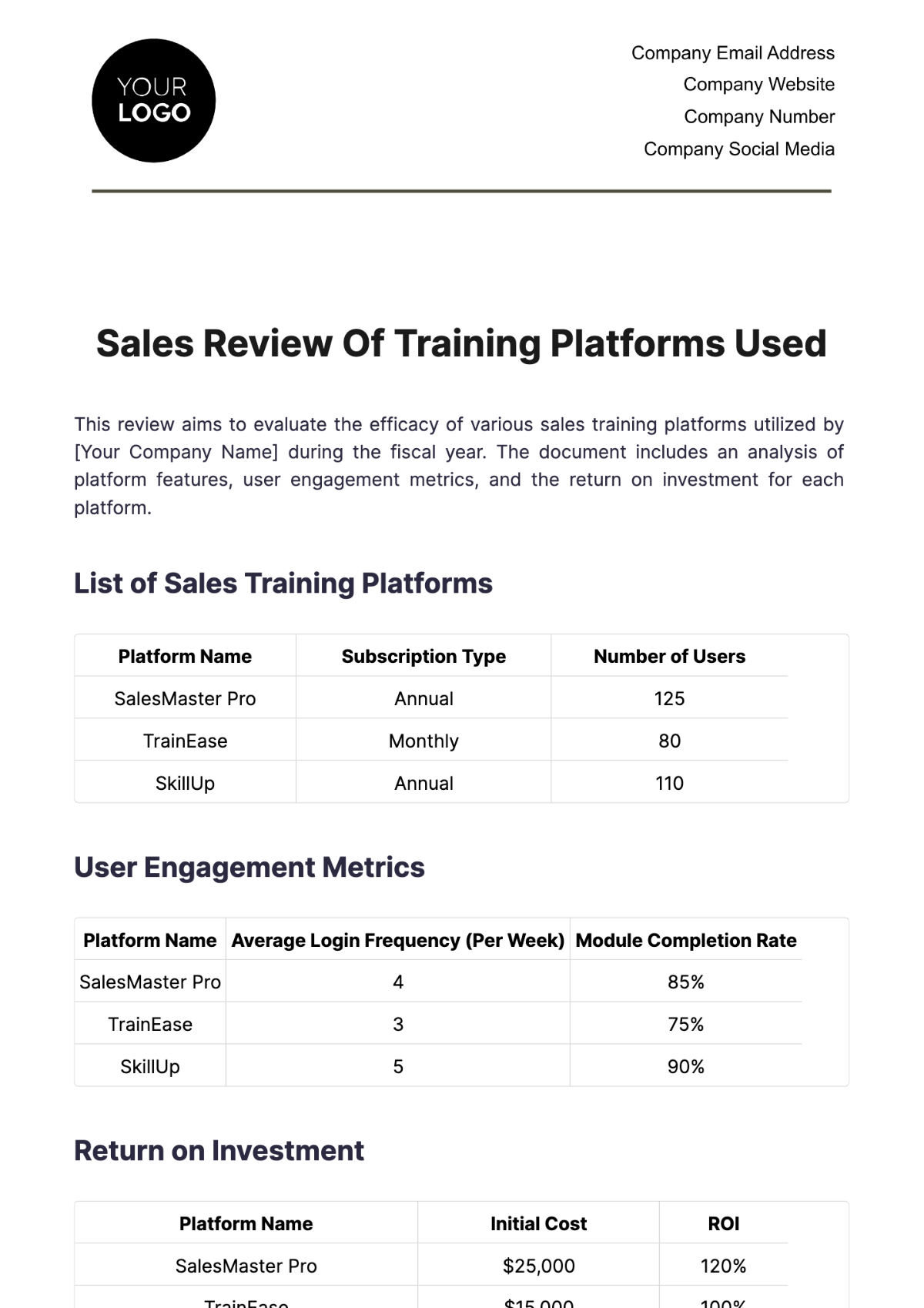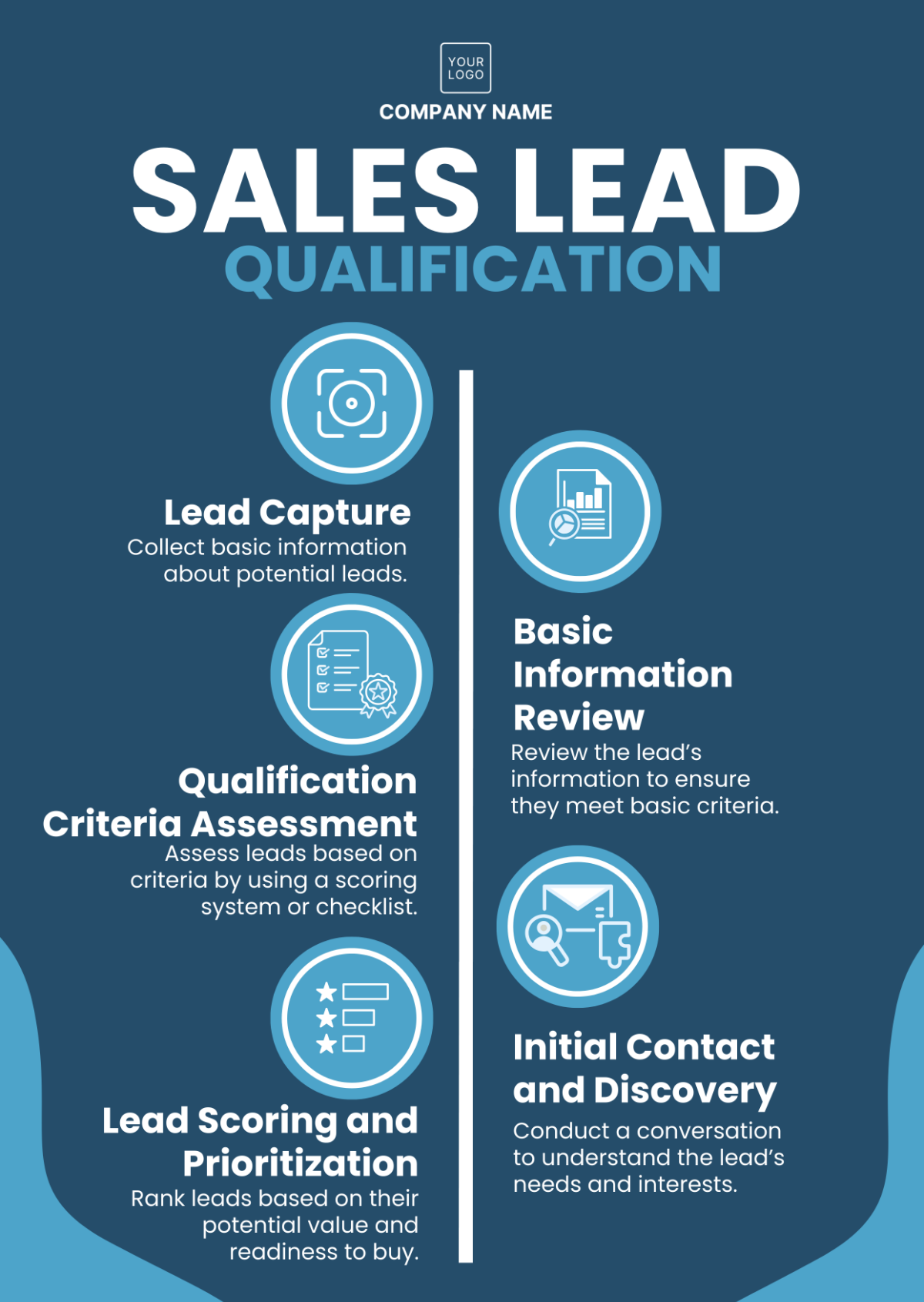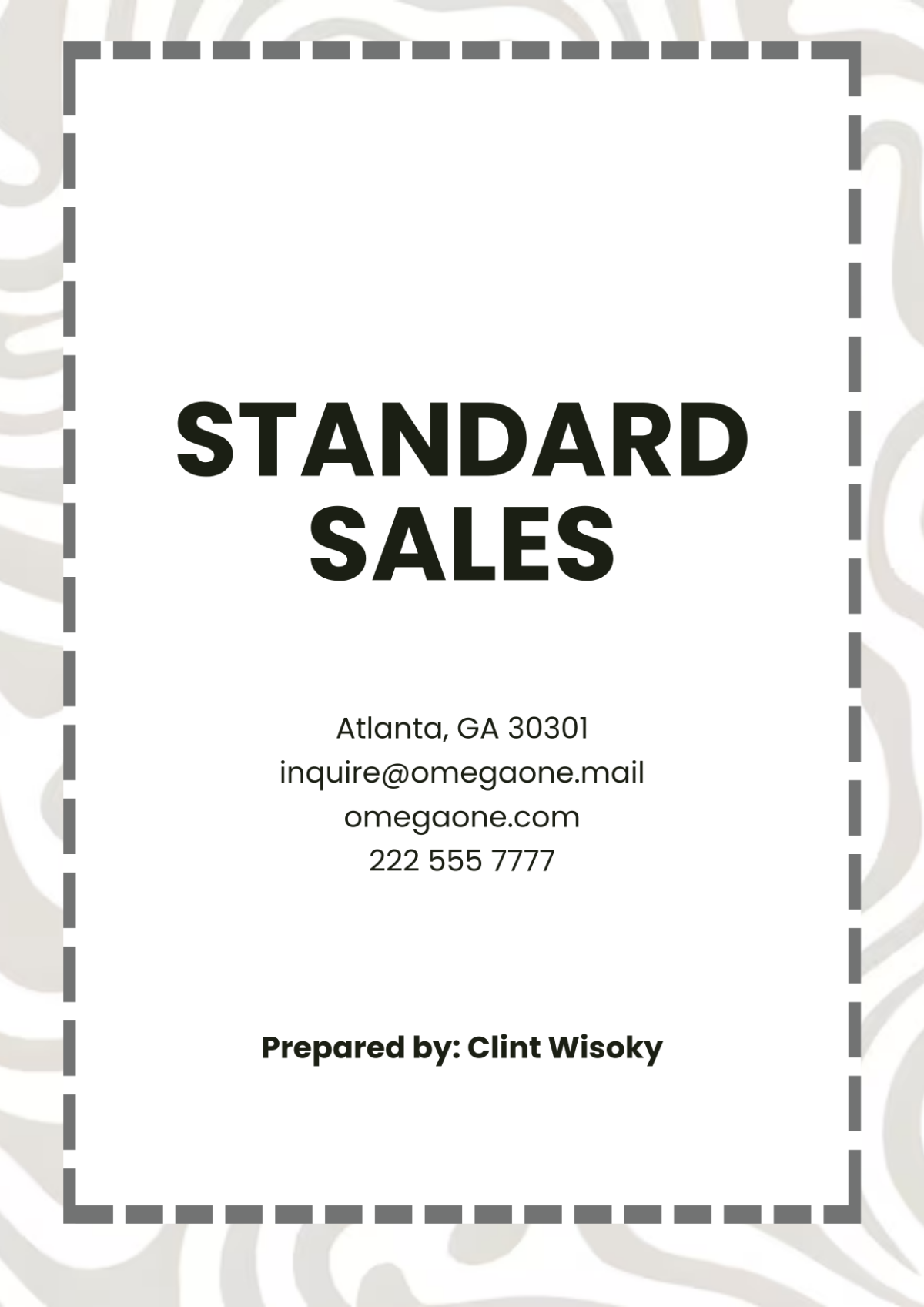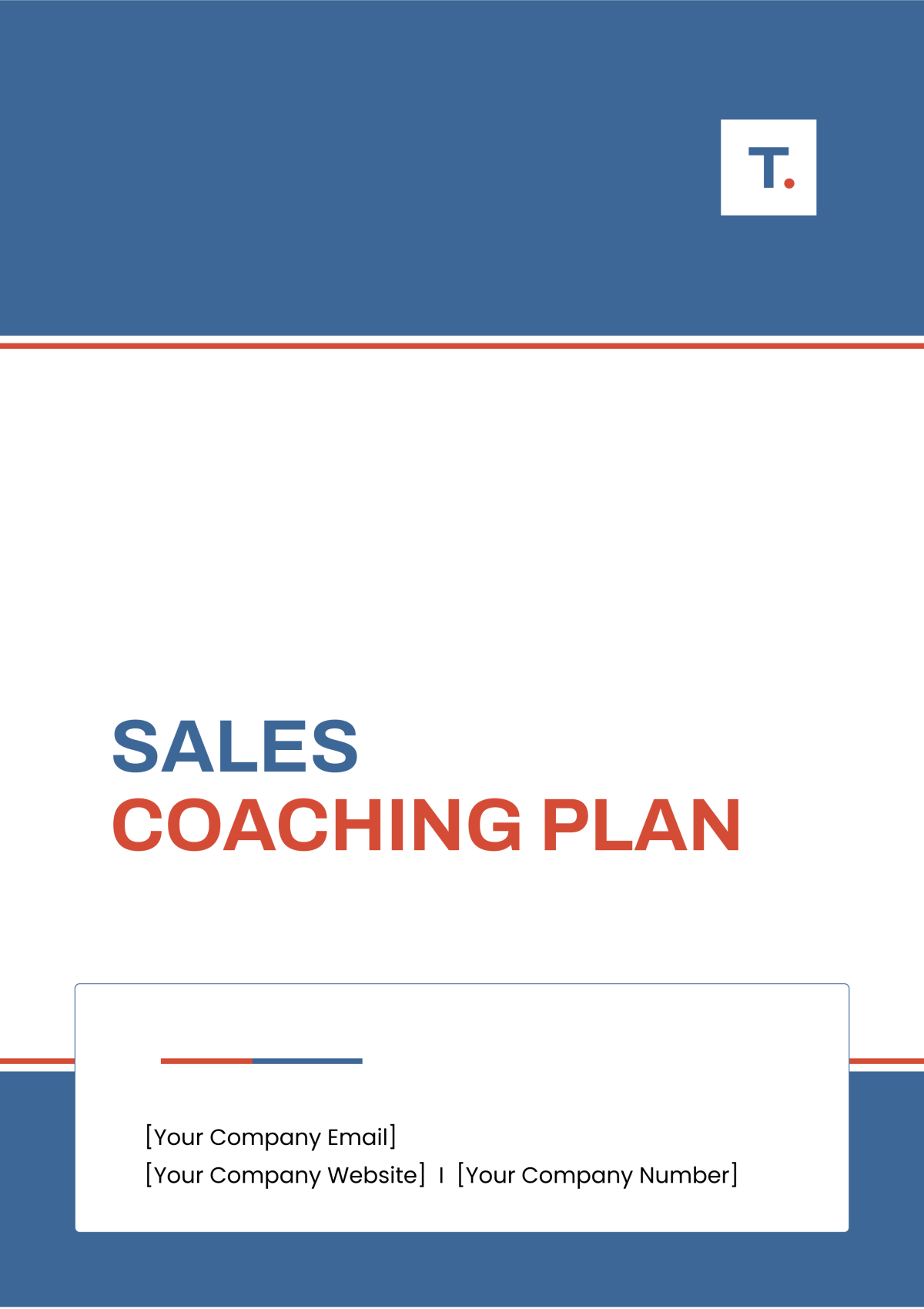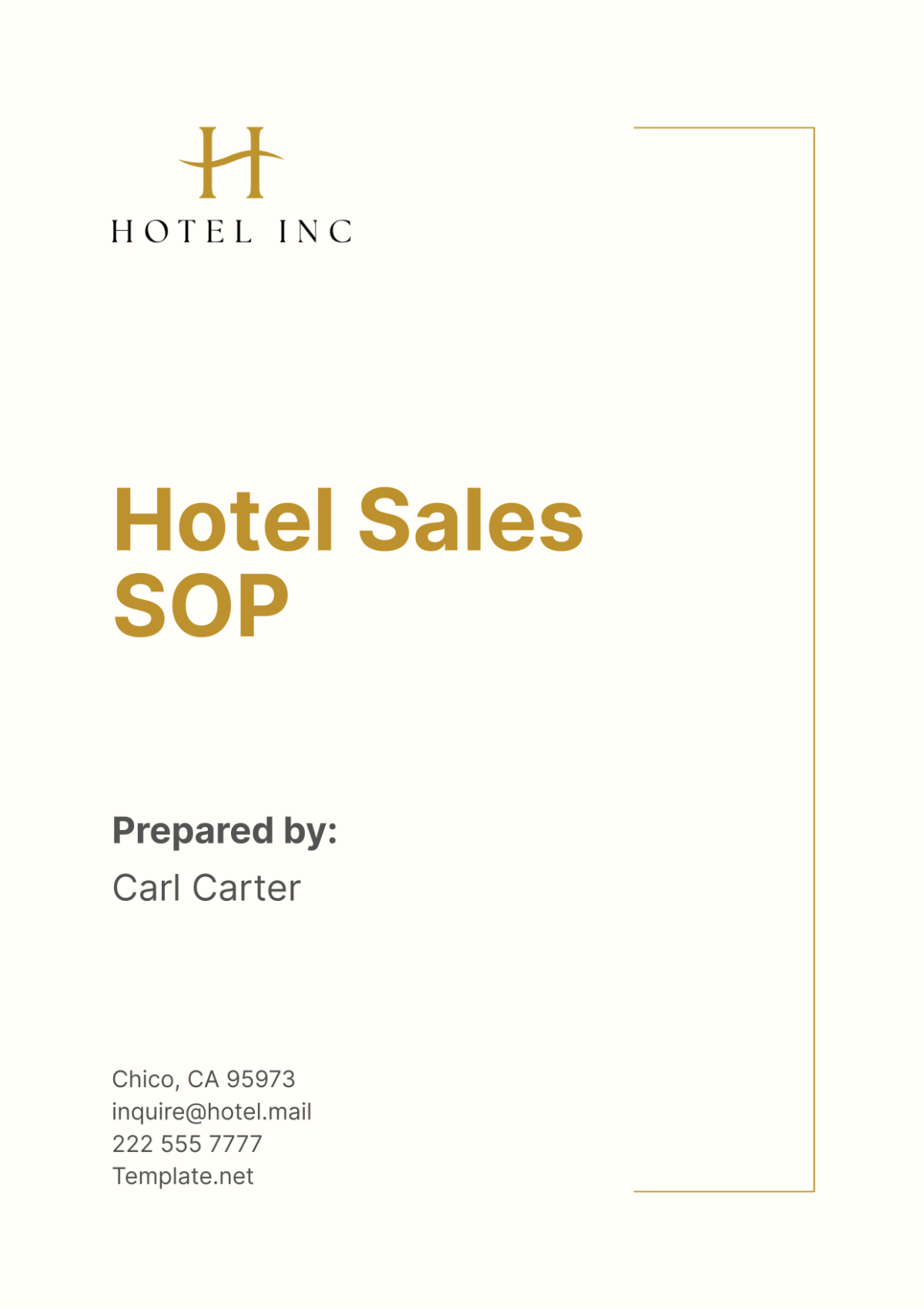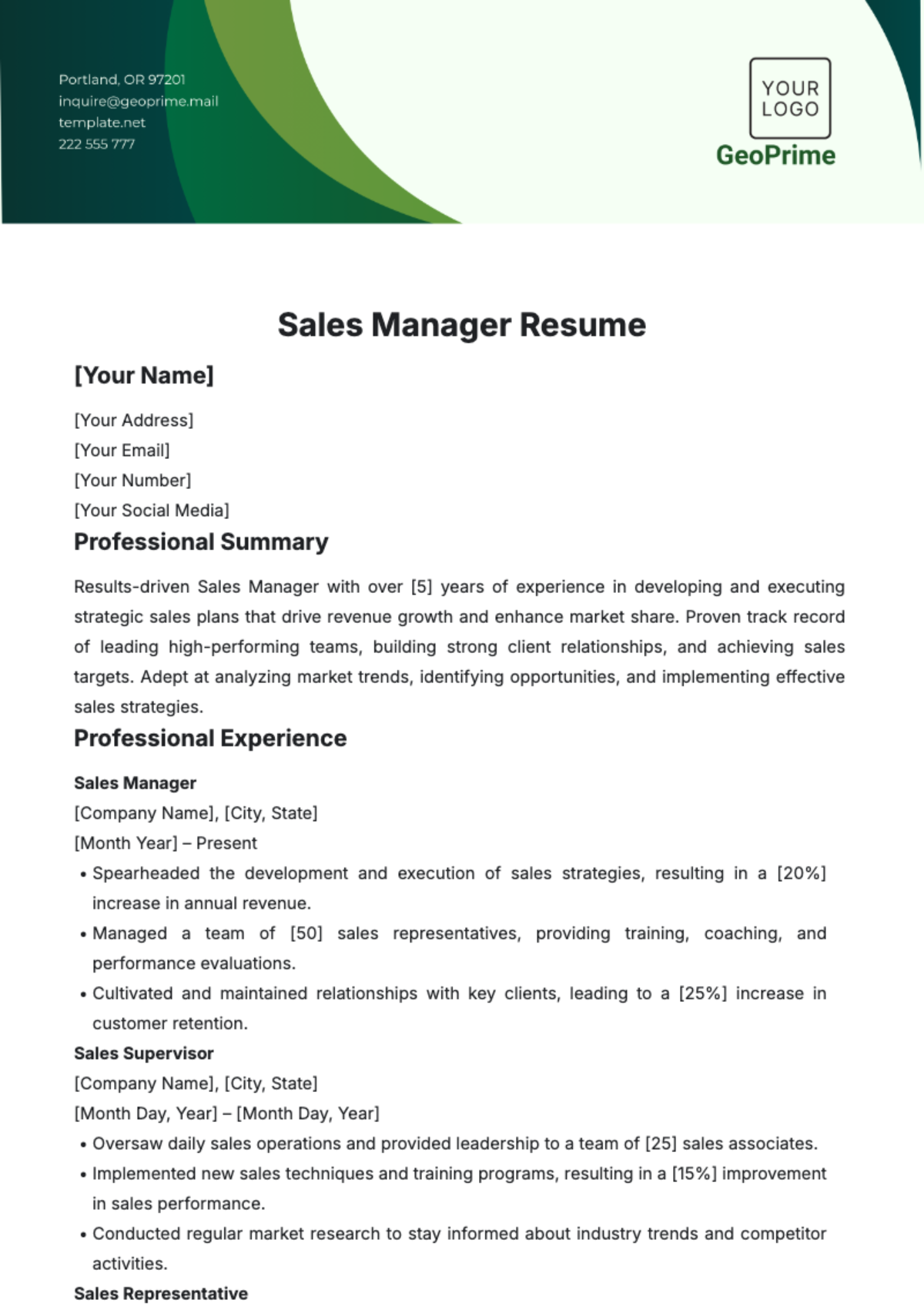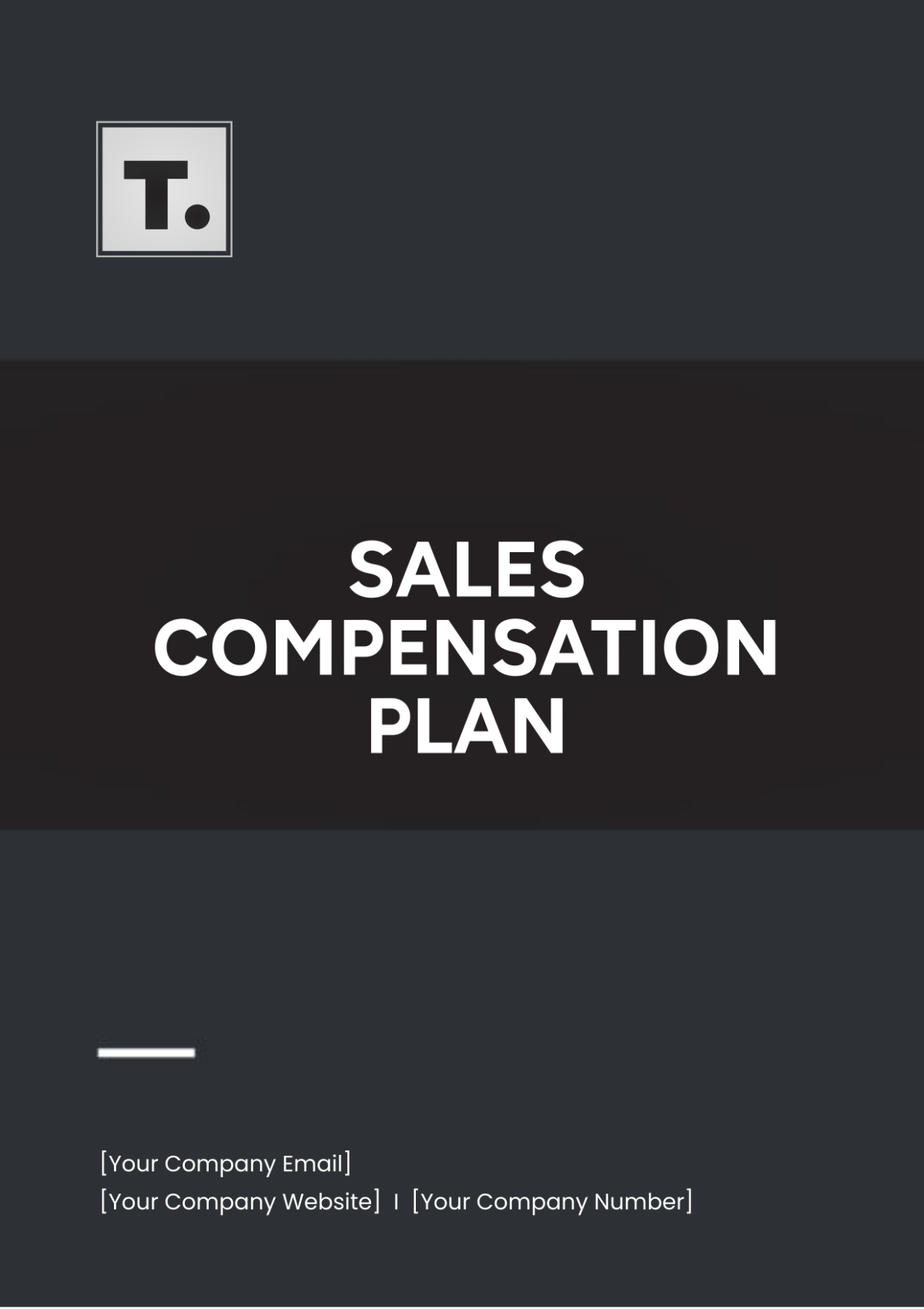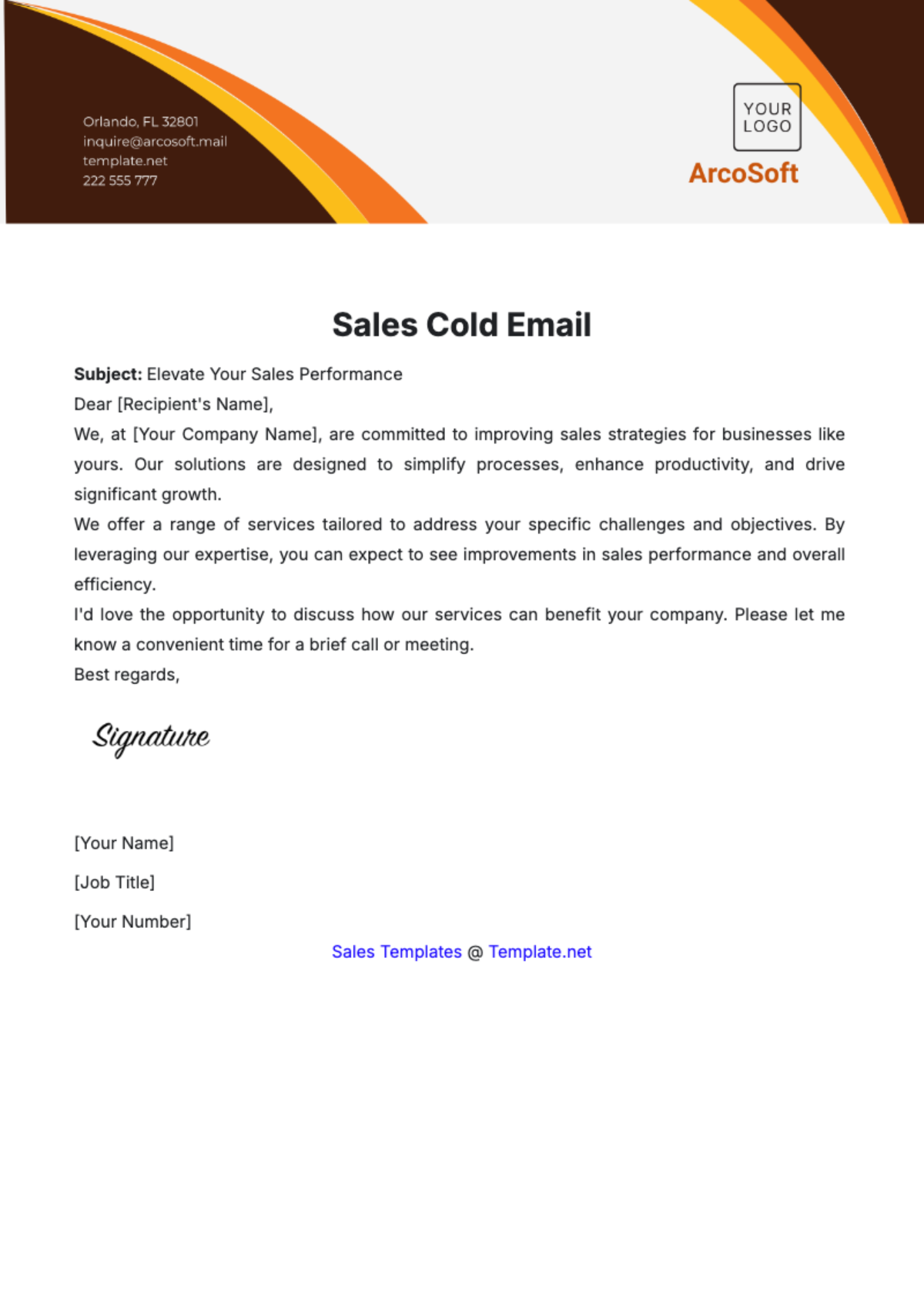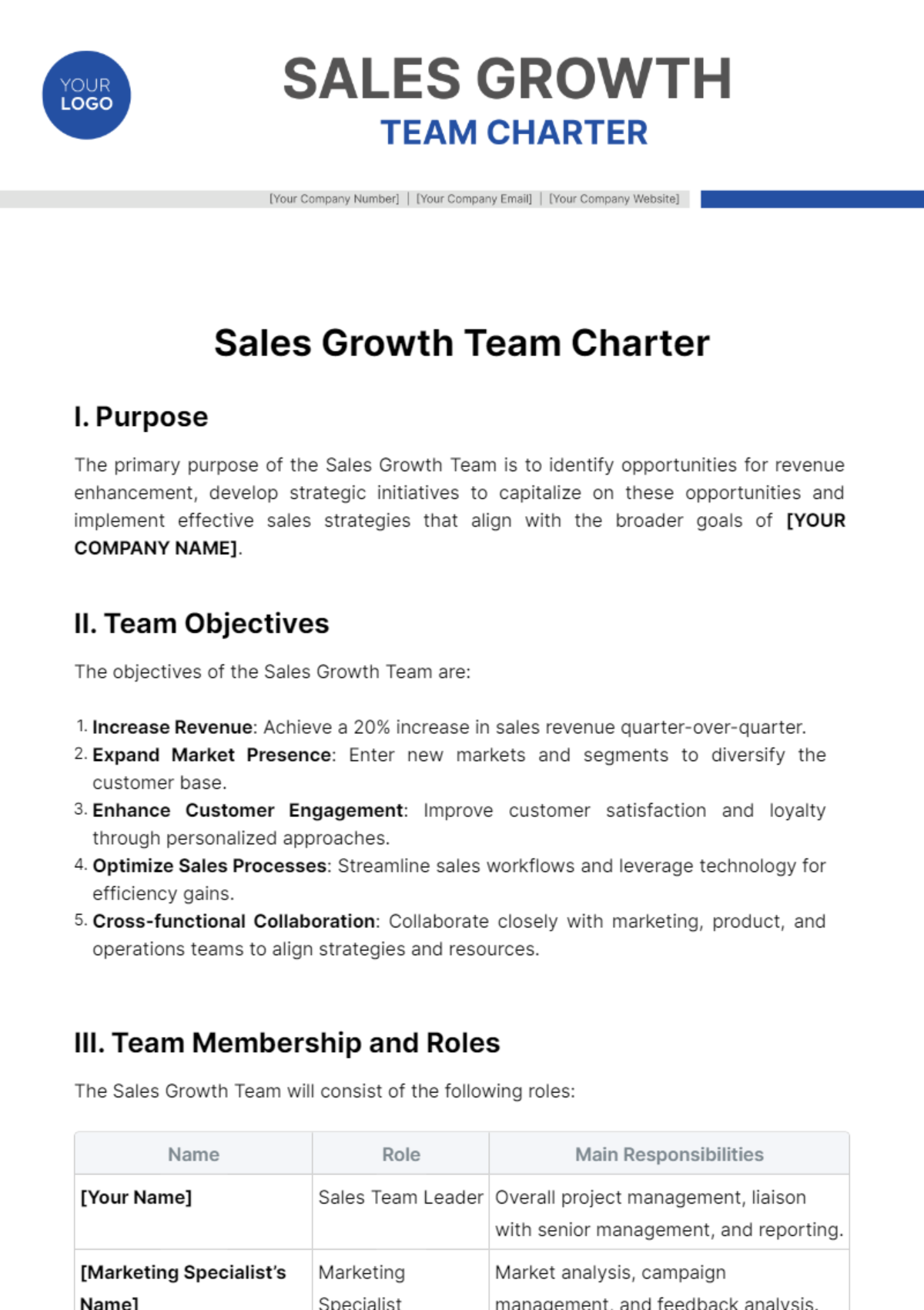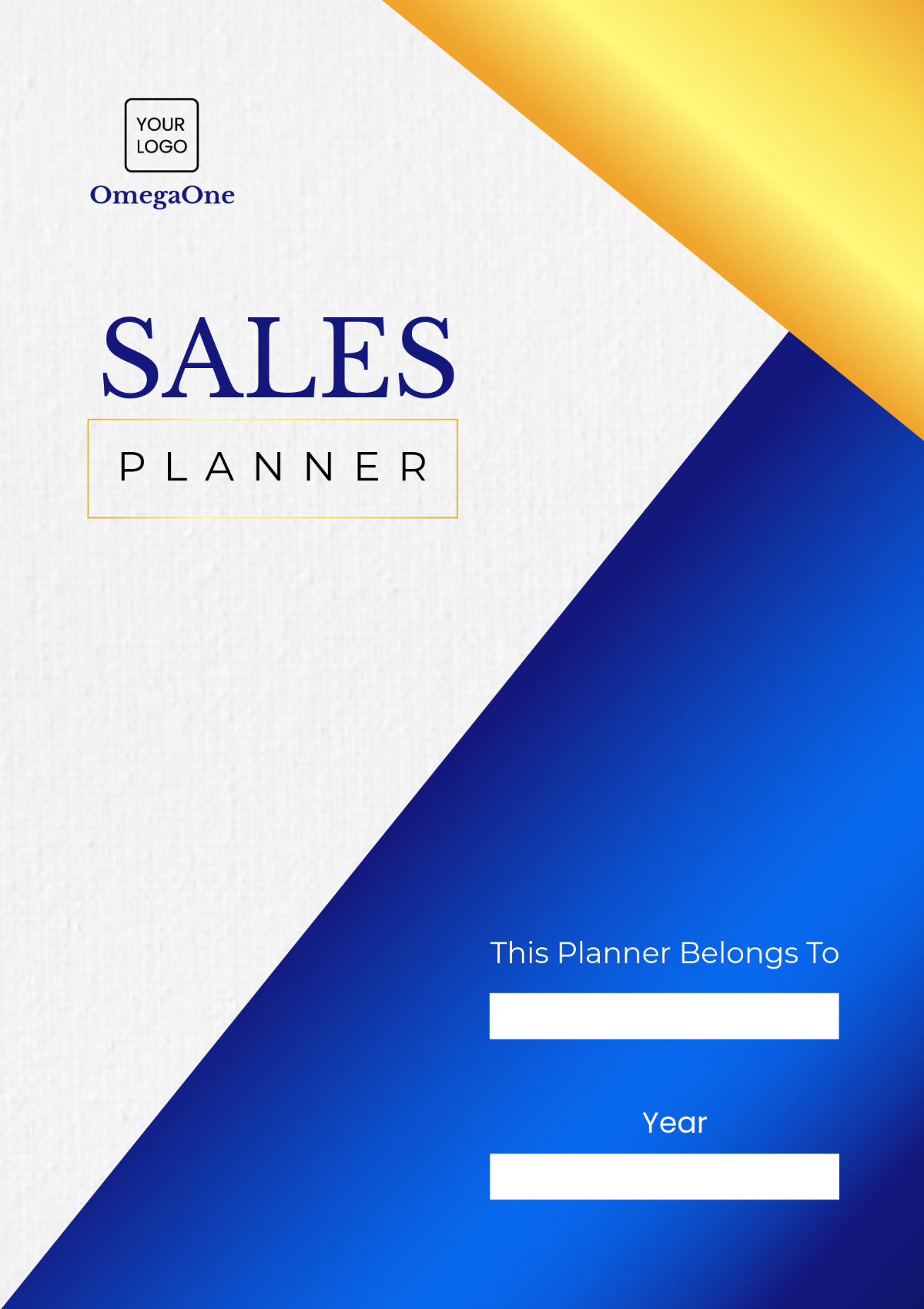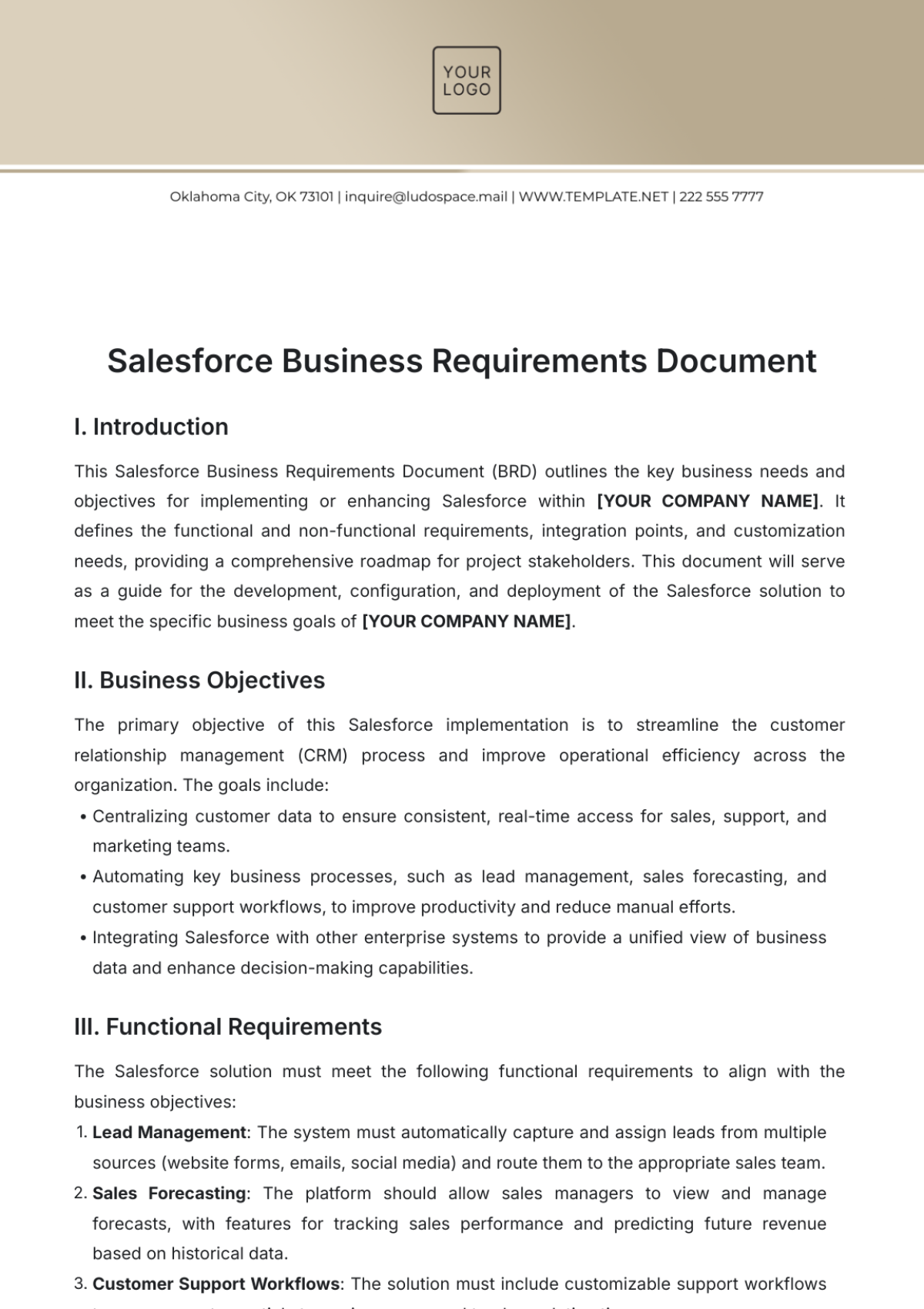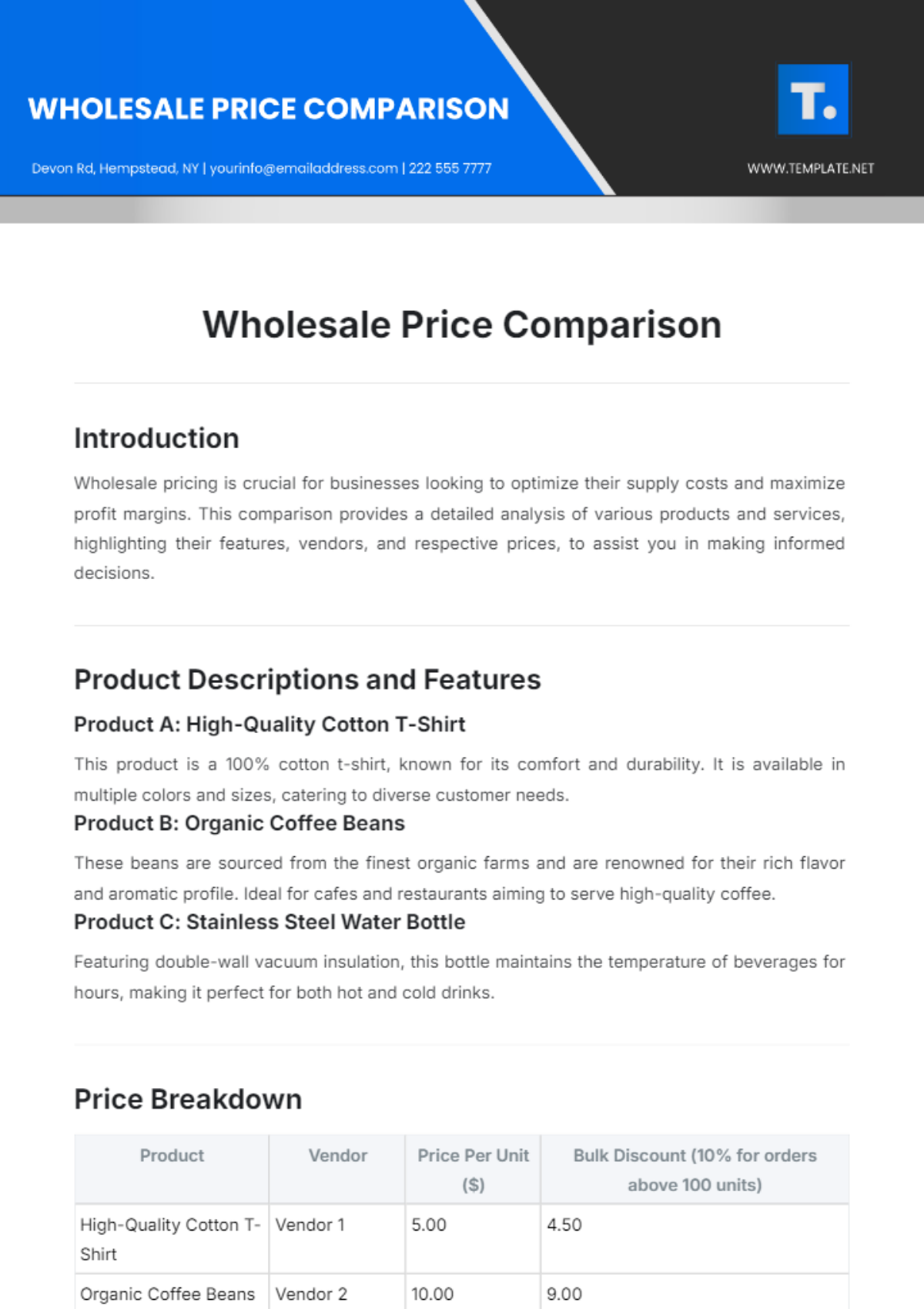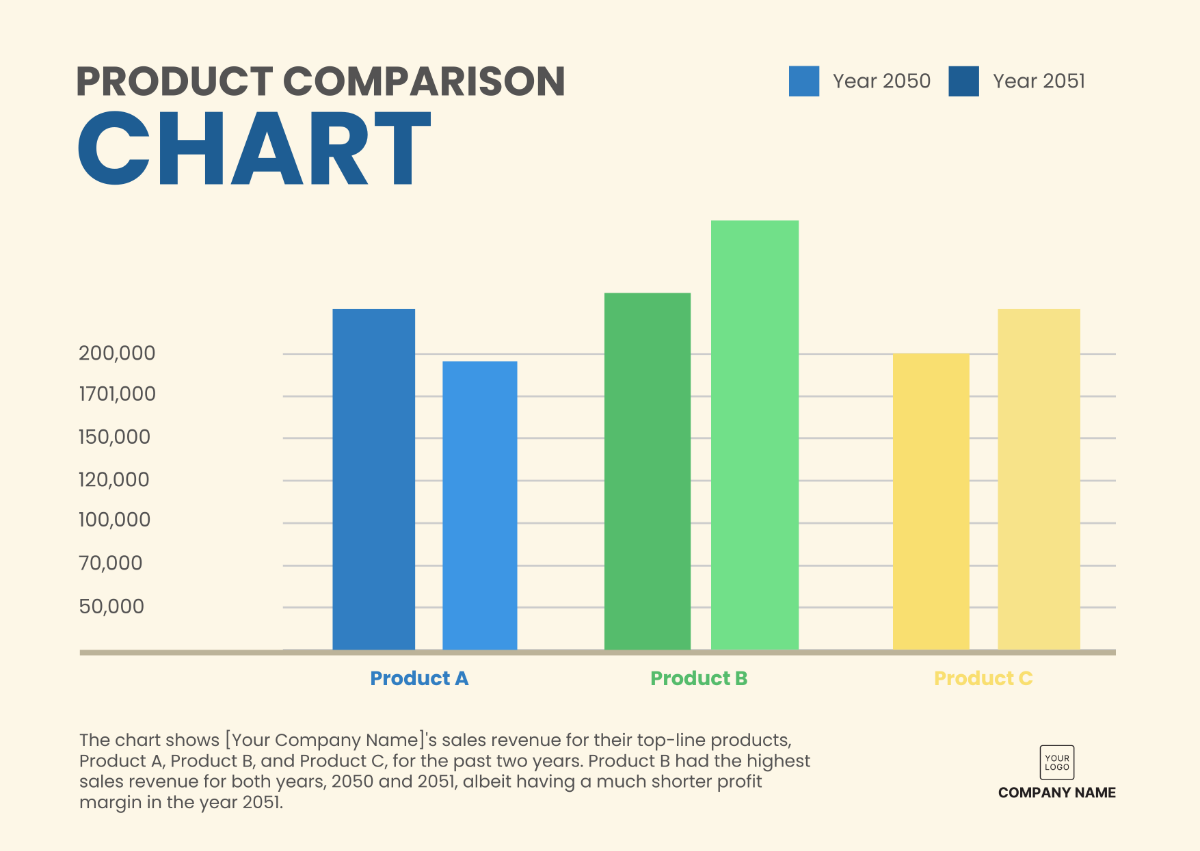Sales Call Script
Introduction
Greeting
Example: “Good afternoon, Sarah. This is [Your Name] from [Your Company Name]. How are you today?”
Purpose of the Call
Example: “I’m reaching out because I noticed that your company, [Client Company Name], has been expanding its operations. We specialize in streamlining business processes and I’d love to discuss how our services could help enhance your efficiency and productivity. Do you have a few minutes to talk about this?”
Qualifying Questions
Understanding Needs
Example: “I see that you’re managing multiple projects simultaneously. Can you tell me about the biggest challenges you’re facing with project management right now? Are there specific areas where you feel improvements could be made?”
Budget and Authority
Example: “Do you have a budget set aside for upgrading your project management tools this year? Also, who else in your organization would be involved in making decisions about new tools or services?”
Value Proposition
Key Benefits
Example: “Based on what you’ve shared, our project management software could really streamline your processes. For instance, our tool integrates seamlessly with your existing systems and provides real-time analytics, which could help you manage your projects more effectively and reduce overhead costs.”
Unique Selling Points
Example: “What makes our software unique is its AI-driven forecasting feature, which not only tracks progress but also predicts potential delays and bottlenecks before they happen. This proactive approach has helped many of our clients avoid costly setbacks.”
Addressing Objections
Common Objections and Responses
Example: “I understand you might be concerned about the upfront cost. However, many of our clients have found that the increased efficiency and reduced project delays quickly offset the initial investment. For example, one of our clients saved $50,000 in project costs within the first six months.”
Reaffirming Value
Example: “To address your concern about the cost, let’s consider the potential savings. Our software’s analytics could help you optimize resource allocation, which might result in significant savings on project expenses.”
Next Steps
Setting Up a Meeting
Example: “I’d love to explore this further with you. How about we schedule a demo next week? I can show you how our software works in action and discuss how it can be tailored to meet your specific needs. Does [Date] at [Time] work for you?”
Sending Information
Example: “In the meantime, I can send you a detailed brochure and a case study from one of our recent clients who faced similar challenges. Could you please confirm the best email address for you?”
Closing
Expressing Appreciation
Example: “Thank you for your time today, [Client Name]. I appreciate you sharing insights into your current challenges. I look forward to the opportunity to help [Client Company Name] streamline its project management processes.”
Final Confirmation
Example: “To confirm, we’ll set up a demo for [Date] at [Time]. I’ll send you a calendar invite shortly. If you have any questions before then, please feel free to reach out.”
Follow-Up
Post-Call Actions
Example: “I’ll send you an email with the brochure and case study we discussed, along with the calendar invite for our demo. If there’s anything specific you’d like us to cover during the demo, just let me know.”
Reminder
Example: “I’ll send you a reminder a day before our demo. Looking forward to our meeting and discussing how [Your Company Name] can assist with your project management needs.”
Additional Tips:
Be Prepared: Research [Client Company Name] recent projects and any news that could be relevant to the conversation. This will help you tailor your pitch to their specific situation.
Stay Engaged: Listen carefully to [Client Name]’s responses and adapt your script as necessary. Show genuine interest in solving her problems.
Be Professional: Maintain a clear and courteous tone throughout the call. Ensure you communicate the benefits of your solution concisely and effectively.




